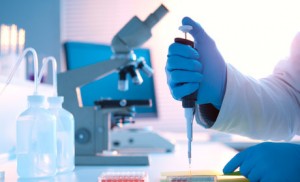Mold Blood Tests
Blood Tests for Mold Exposure

There are few if any accurate blood tests that can determine mold exposure. It is our experience that blood fungal cultures may yield as high as a 9 out of 10 false negative results for the detection of fungal exposure within the human body.
IgE Testing
IgE testing has been available for years. It is a standard in the industry as a first responder or allergy test. This test can be used to determine:
1. If the patient has an allergy to a specific species of fungi / mold
2. If the patient is still living in the contaminated environment and tests positive for an abnormal level of a species of mold on the IgE test, then once the patient is removed from the contaminated environment the patient may then test again several months later. If the second test taken at a later date shows decreased levels in the IgE test the scientific weight of evidence would rule that the patient’s primary place of insult or exposure has been eliminated.
3. C3a, C4a and C reactive protein Inflammatory Marker Testing are poor medical tests for mold exposure victims. Few physicians believe that inflammatory marker testing is an important, let alone valid testing for linking any type of diagnosis for mold exposure. The reason being that a false positive results can occur if the patient has been exposed to simple things such as grass, bee pollen, gram-negative bacteria, or a plethora of the substances. Though one may test positive for inflammatory markers it is impossible to determine with any amount of scientific certainty what species of fungus, yeast, compounds, or elements within any particular environment would have been responsible for a positive result. National Treatment Centers for Environmental Disease find inflammatory marker testing to be in a category of “over testing” the patient without medical necessity, as it provides no clear path for medical treatment by the physician.
In essence, inflammatory marker testing is a downstream symptom, or result of a primary insult to the human body. The key to patient recovery is to treat the cause, not the symptoms.
